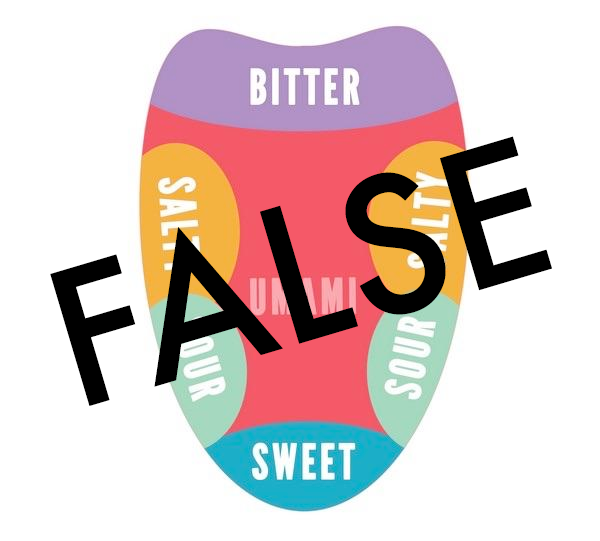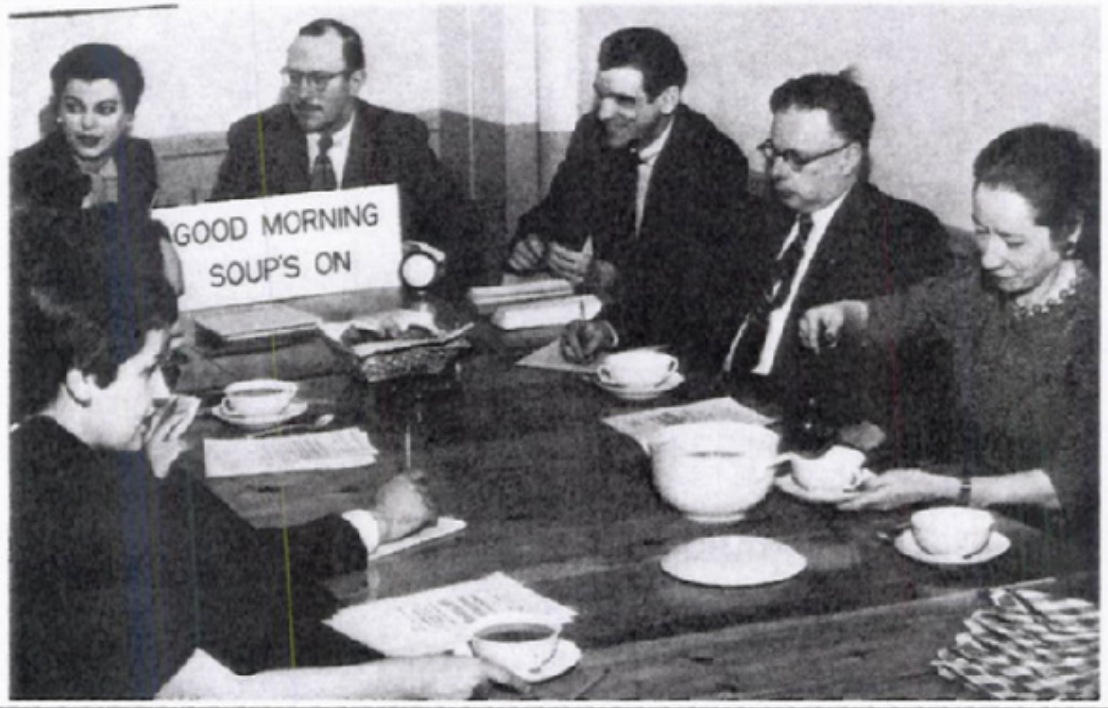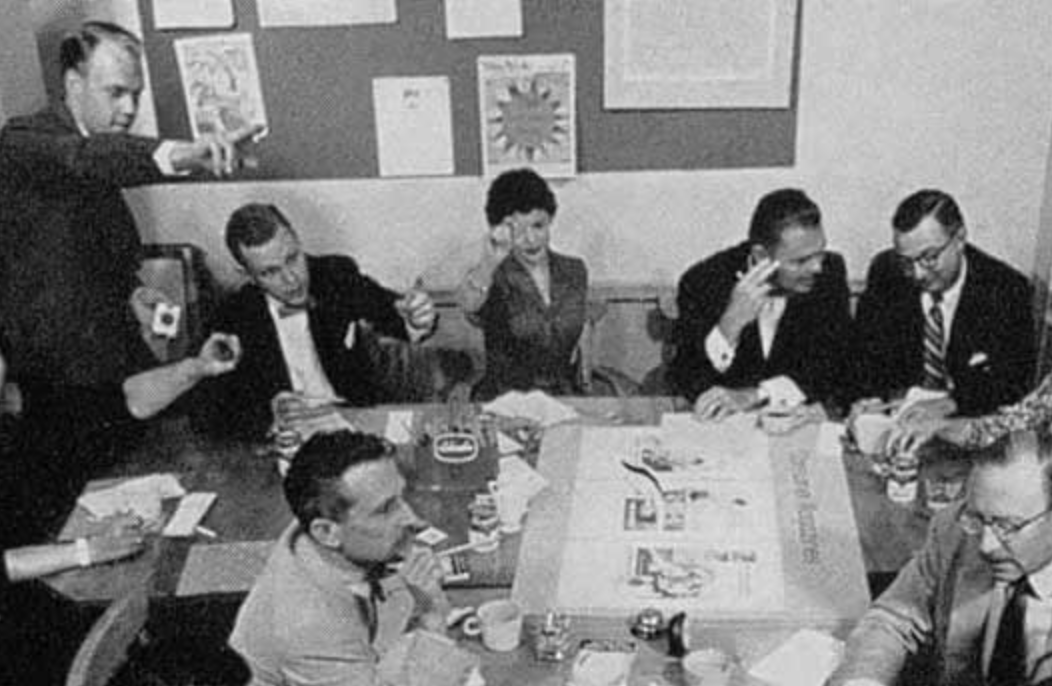Storytelling
The Trouble With Brainstorming (And How To Overcome It)
On May 25, 1787, a group of revolutionaries convened for a team writing project that would change the course of history. They dubbed their meeting the Constitutional Convention of the United States of America. And the way they conducted it still resonates for many of us working today.
Here’s what the official invitation to participate in the Convention read:
CONSTITUTIONAL CONVENTION:
Let us come up with a systemme of Government! Everyone powder your wigs and join us in the Continental Congress Room at 9AM sharpe, ready to brain-storm!
Remember: No idea is a bad idea! We shall have free coffee and white-boards and bounce-y balls.
The Masons need the room after us, so we have a hard stop at 10. But don’t worry, we should be done by then!
I’m being facetious here. But as far-fetched as that sounds, how often do we take on important problems in business using a similar approach?
All the time.
Groups of people have been coming up with ideas together since forever. Our ability to do this helped us take over planet Earth. And it certainly played a part in the real U.S. Constitutional Convention.
But the ritual of brainstorming—that thing we do when we gather around a table and throw out ideas—has become one of the most popular problem-solving activities for teams, despite one big problem: It doesn’t work.
Research proves this over and over again. To the point that the prominent organizational psychologist Adrian Furnham has said, “Evidence from science suggests that business people must be insane to use brainstorming groups.”
Before you protest that brainstorming works for you, hang in here with me for a second. In this post we’re going explore the challenges of brainstorming—and why what works for you may not really be “brainstorming” at all.
The Mad Men Who Coined the Term “Brainstorming”
The term “brainstorm” dates back to 1939. Alex Osborn, one of the partners at the ad agency BBDO, began holding “group-thinking” sessions to come up with ideas for advertising clients. The goal of these sessions was to generate a large quantity of ideas by combining brainpower and withholding judgment. “The villainess is a gal called Prudence,” he quotes.
Ten years later, brainstorming and Osborn exploded in popularity with the publication of the book Your Creative Power. In it, Osborn defined brainstorming as “using the brain to storm a creative problem—and to do so in commando fashion, with each stormer attacking the same objective.”
In the book, he lays out the circumstances for such brainstorming to work:
- How big of a group? “The ideal number is between 5 and 10.”
- What sex or sexes? “A group of men seems best.”
- What caliber of minds? “The ideal group should include both brass and rookies.”
- The best overall group? Naturally, Osborn explains that his people at BBDO are best at it. “I found it far tougher when I organized a volunteer group of the brightest young executives in our community.”
Osborn’s book won BBDO a lot of business. Unfortunately, like that thing about your tongue having different spots to taste different flavors, Osborn’s assertion that brainstorming got canonized into textbooks and repeated throughout American culture until they were taken as granted—even though both have a common problem: They’re wrong.

The Group Brainstorming Fallacy
The first scientific test of Osborn’s brainstorming method happened at Yale in 1958. Groups of students were given creative puzzles and instructed to follow Osborn’s rules of brainstorming:
- Focus on a single target.
- Withhold criticism. No idea is a “bad” idea.
- Go for more ideas.
- The crazier the idea, the better. (“It’s easier to tone down than think up.”)
The results were a staggering refutation of Osborn’s premise. Solo students came up with twice as many solutions as the groups. And a panel of judges rated the solo students’ ideas more “effective” and “feasible.” The group setting, in other words, suppressed creativity.
More studies have repeatedly come to the same conclusion. The science can be summed up by Washington University psychologist Dr. Keith Sawyer: “Decades of research have consistently shown that brainstorming groups think of far fewer ideas than the same number of people who work alone and later pool their ideas.”
Why would this be? The answers have to do with social dynamics and personality diversity.

Subconsciously, members of a group prioritize staying in good standing with their group over many other goals. People who feel more secure will be more vocal in expressing ideas that push the boundaries versus those whose acceptance feels more tenuous. The level of psychological safety in the group will be a constraint on the creativity of expression—and that will be a function of the people in the room.
Then there’s personality. Introverts are less likely to vocalize ideas in a group setting than in a smaller setting. Other personality traits will also affect participation.
These are just a few of the more common psychological effects at work in a group setting. The takeaway from all these social dynamics is clear: The success of group “storms” is a roll of the dice.
The Management Crutch
So why do we keep at the group brainstorming ritual despite the overwhelming evidence that it’s not the best way to unlock creativity? I’d wager the answer is because it’s easy.
As a manager, if you want to involve your team in a problem-solving process, a brainstorming session is a relatively painless way to pull this off.
As author Scott Berkun puts it, “The bad reason that brainstorming is popular is that it is a convenient way for bad managers to pretend that the team is involved in the direction of the project. A team leader can convince themselves that they know how to cultivate and work with ideas that are not their own simply by holding a meeting.”
It gets worse. The power dynamics of having a manager in the room during a brainstorm session takes even more away from the group’s creative potential.
As Stanford MBA school professors Jeffrey Pfeffer and Bob Sutton point out, “When a group does creative work, a large body of research shows that the more that authority figures hang around, the more questions they ask, and especially the more feedback they give their people, the less creative the work will be. Why? Because doing creative work entails constant setbacks and failure, and people want to succeed when the boss is watching–which means doing proven, less creative things that are sure to work.”

How to Actually Unlock Group Potential
Whenever a new study shows that group brainstorming doesn’t work well, business gurus and consultants erupt in protest. They’ll say that the studies were too narrow, that the experiments don’t run brainstorming sessions like they do. That you should hire them because, like Osborn argued, their way of doing this works better than if you do it on your own.
It turns out that we can overcome the problems with Osborn-style brainstorming. And we don’t need to hire those guys to do it. All the above research—and a little more—teach us how.
To do it, we need a structure to overcome the brainstorming problems we’ve outlined so far:
- There’s huge variability in success based on how a brainstorm session is set up.
- Group dynamics and power dynamics lead people to hold back.
- A large quantity of ideas does not mean quality of ideas.
- Brainstorm sessions often have little follow-through because the point is usually to involve the team rather than solve the problem. (Or because the problem doesn’t actually get solved through the brainstorm session.)
Any group discussion will live or die by its setup. Given the right instructions, group, and the follow-up, even a creative meeting can be productive.
“Effective brainstorming is not just sitting in a whiteboarded room and allowing the loudest person to pontificate,” said Allen Gannett, author of The Creative Curve. “Effective brainstorming is highly structured, collaborative, and driving towards a specific solution.”
In this sense, Osborn taught some important caveats for making brainstorming more effective than an aimless discussion. Some of his rules have been solidly disproven. But guidelines like having “a single target” rather than a general topic do promote group creativity.
To maximize our chances of effective group problem-solving, we need to minimize negative social dynamics and maximize the potential for quality ideas. We have to make sure we’re tapping into our teams for more than symbolic participation.
Research shows us that some things can lead brainstorming sessions to outperform a typical Osborn-style brainstorm:
- Having more cognitive diversity in the brainstorming group.
- Injecting outlandish or extreme ideas, thereby pushing the boundaries of what’s “acceptable” or “safe” for participants to suggest.
- Getting the group in a good mood at the beginning of the session.
- Giving participants prompts designed to get people out of their normal mode of thought and kickstart lateral thinking, such as “what if we had to make this 10x better?”
- Having participants do all of the above on their own time, thereby coming to the group discussion prepared.
- And most of all: Actually debating whether ideas suggested are good or bad, rather than withholding judgment. (This is where the lifetime of research by Dr. Charlan Nemeth of Berkeley is particularly powerful: every study of brainstorming vs debate shows that debate wins.)
A group leader who can lead a thoughtful, structured meeting can do even better by reframing brainstorming as something else.
Better Brainstorming & The Scientific Method
Science has shown that the brainstorming method is variable and unreliable. It can lead to creative ideas, but only if you’re both structured and lucky.
Fortunately, science has an alternative for creative problem-solving that’s completely reliable: The Scientific Method. When we map what we know about group dynamics and brainstorming to the steps of The Scientific Method, what emerges is an elegant, straightforward process.
The Scientific Method:
- Make an observation
- Ask a question based on that observation
- Make a hypothesis about the answer to the question
- Try to disprove the hypothesis
- Analyze the results of your hypothesis-busting efforts
- Repeat until you find the best answer
Applying the scientific method helps us add structure to eliminate some of brainstorming’s most common problems.
Observation: First, we need to get clear on the thing this is about. What’s the Observation that’s kicked off this problem-solving exercise? E.g. Sales are down this quarter versus last year.
Question: Once that’s clear, we can ask the Question, the thing we would normally get into a room to brainstorm. But by making the Observation clear first, we can make sure we ask the right Question. E.g. How can we improve sales year over year?
Hypothesis: Now we need some hypotheses. This is where brainstorming would normally tell us to get a group of people around a whiteboard and throw out ideas. But when we frame things in terms of a Hypothesis, we’re required to do a little more prep-work, and a little harder thinking than usual. Which is a good thing.
“The biggest mistake people make when it comes to brainstorming is thinking that it means free-associating,” says Gannett (author of The Creative Curve).
Instead of throwing people in a room with sticky notes, “cast” a group of diverse thinkers who are likely to have different perspectives. Then give them a brief of the Observation and Question. Let them think up hypotheses on their own (and you can give them creativity-boosting prompts like the ones above if you want). And ask them to prepare to present, explore, and debate their and others’ hypotheses.
(Often managers will hold brainstorming meetings because they know their team members won’t take the time to come up with ideas on their own, so the meeting becomes a time block that forces people to participate. But if you can’t get people to do work on their own time, I’d suggest you have them block out time to do so on their own—and if they still won’t prepare for a meeting, then get rid of them.)
Once you’ve gathered Hypotheses, I suggest breaking Step 4 of the Scientific Method into two activities: Explore & Refine Hypotheses, and Debate & Disprove Hypotheses.
Depending on the personalities of the people involved, you may want to make this step a series of small group (or even 1-on-1) gatherings rather than a large group session where social and power dynamics will play out in ways that may reduce psychological safety.
Explore & Refine Hypothesis: Before you try to cull the bad ideas, take some time to build on people’s ideas. Suspend your disbelief, open your mind, and ask some what-ifs: “What if this were true?” or “What if we did do this?” etc.
If you do this as a team, then building on each other’s ideas becomes a shared goal, and you’ll be more likely come up with ideas that no one individual could have on their own.
Debate & Disprove Hypothesis: After you’ve generated hypotheses and built them up, you need to try to poke holes in them. This is where most brainstorming activities get demolished in experiments. Here it can be helpful to have people on each side of a debate. But if the group’s shared goal at this point becomes trying to disprove hypotheses, then it’s easier to keep the exercise from getting personal. The goal of The Scientific Method, after all, is to find the truth, not to be right.
(For a primer on hosting a productive debate, check out my HBR article on the subject. For in-depth debate skills and practice, check out the Dream Teams course on Snow Academy.)
Experiment: At a certain point, a good debate like this will end up where The Scientific Method often does: with the need to run a test.
This sets a group up for the perfect follow-up where brainstorming usually stops. The Hypothesis or Hypotheses that are most intriguing move on to become experiments.
Analyze: After running experiments, the group leader can analyze the results and see if they need to repeat the process.
Turn Brainstorming Into Workshopping—And Make Better Content As A Result
Just because the scientific method is straightforward doesn’t mean following it is easy. But that’s exactly why brainstorming is less effective—because it’s so easy.
Group creativity is born of the friction between our different ways of thinking.
My personal process for generating good content ideas has evolved to reflect this. I’ll show up to meet my director buddy armed with what I think is a great idea for a story, only to have him shoot holes in it… and help me find a tangential idea that’s even stronger.
Or I’ll excitedly present my writing partner with my solution to a problem we’re working on… and she’ll suggest a different idea, or ask a single question that blows up the whole thing. And this will often lead us to a much more interesting solution than I’d thought up on my own.
This is exactly why I always like to take my ideas to these guys. Instead of “brainstorming,” we “workshop.” The bottom line is that few great innovations in history came from a brainstorm session. Especially compared to the amount of innovation that’s come from groups of people having extended periods of cross-pollination and debate.
After all, the actual U.S. Constitutional Convention lasted nearly five months. It consisted of hundreds of debates and thousands of hours of prep-work behind the scenes. The output was a solution so clever that it became a new “best practice” for the whole world. One that has held up for a remarkably long time.
Image by Andi PantzGet better at your job right now.
Read our monthly newsletter to master content marketing. It’s made for marketers, creators, and everyone in between.




